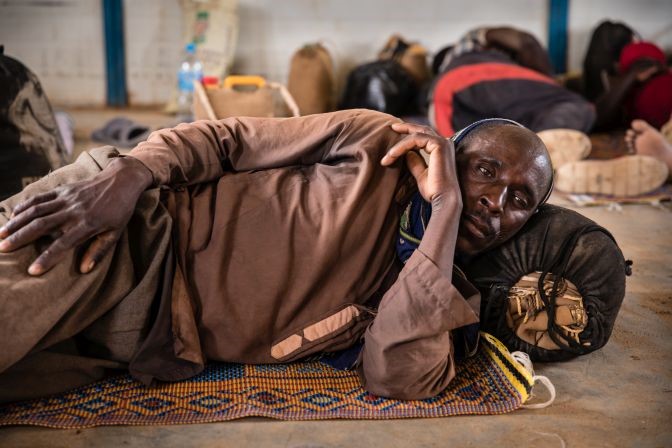The city of Agadez sits on the edge of the Sahara in northern Niger and has traditionally been a major transit point for migrants from sub-Saharan Africa traveling towards North Africa and Europe. These migrants move for various reasons, be it for economic reasons or to flee conflict, such as from neighbouring Mali and Nigeria.
Last month, I had the opportunity to visit Agadez. The Migration Emergency Response Fund (MERF) funded two projects in Agadez over the past year, both led by Doctors of the World (DOTW). In September 2017, DOTW was funded to respond to the deportation of migrants following Algeria’s resumption of its policy of repatriating migrants from sub-Saharan Africa to Niger. Over the course of the project, DOTW responded to nine deportation waves in which 4,178 people arrived in Agadez. One year later, DOTW raised an alert to respond to a recent spike of close to two thousand Sudanese migrants arriving from Libya, which had overwhelmed the response system. As part of my visit, I was quite keen to understand the impact of last year’s project and what lessons learned had been drawn from it for the current response.
I was surprised to see that one year after the end of the project, the arrival site for migrants deported from Algeria still stands. Actors such as DOTW, International Organisation for Migration (IOM), International Rescue Commitee (IRC), as well as national authorities continue to provide support to the convoys of Nigerien migrants, as well as people from Mali, Senegal, Cameroon, and Nigeria that continue to arrive on the site. Traveling in construction trucks for several days, these migrants arrive in Agadez exhausted and dehydrated, often in need of medical and psychological care.
DOTW supported the Regional Disaster and Food Crisis Prevention and Management Committee and the Agadez Health District in setting up a medical screening and treatment mechanism at the arrival site. This comprised medical and psychological screening units, second line medical care units and NFI and food distribution units. Mobile latrines and water tanks were also installed.
According to discussion with the DOTW team, one of the greatest strengths of the MERF project was in setting up a communication and coordination system with national authorities. Indeed, DOTW identified early in the project that the time between the alert by the Regional Disaster and Food Crisis Prevention and Management Committee and migrants arriving in the Agadez region was insufficient for an appropriate response. DOTW worked with the committee to develop a faster and more streamlined communication system which has improved available reaction time from the typical 12 hours to up to 4 days. These habits have been maintained and the communication system remains in place to this day.
Another important learning from the project came up during my discussion with DOTW’s human resource staff. Since MERF projects are only 3 months and are meant to cover urgent humanitarian needs, it’s imperative for teams to begin activities quickly. During the first MERF project, DOTW did not hire new staff, instead working with the team already busy on the ground. Every member of staff was mobilised and working together, even late into the night. Though it created a feeling of team spirit, it was also exhausting. This round, they hired former interns who already knew DOTW to work 100% on the MERF project for support roles such as HR, logistics, and finance. While still under the supervision of other senior staff, this has allowed them to be much faster and more effective, while staying relatively cost efficient.
Read more about the Migration Emergency Response Fund.

